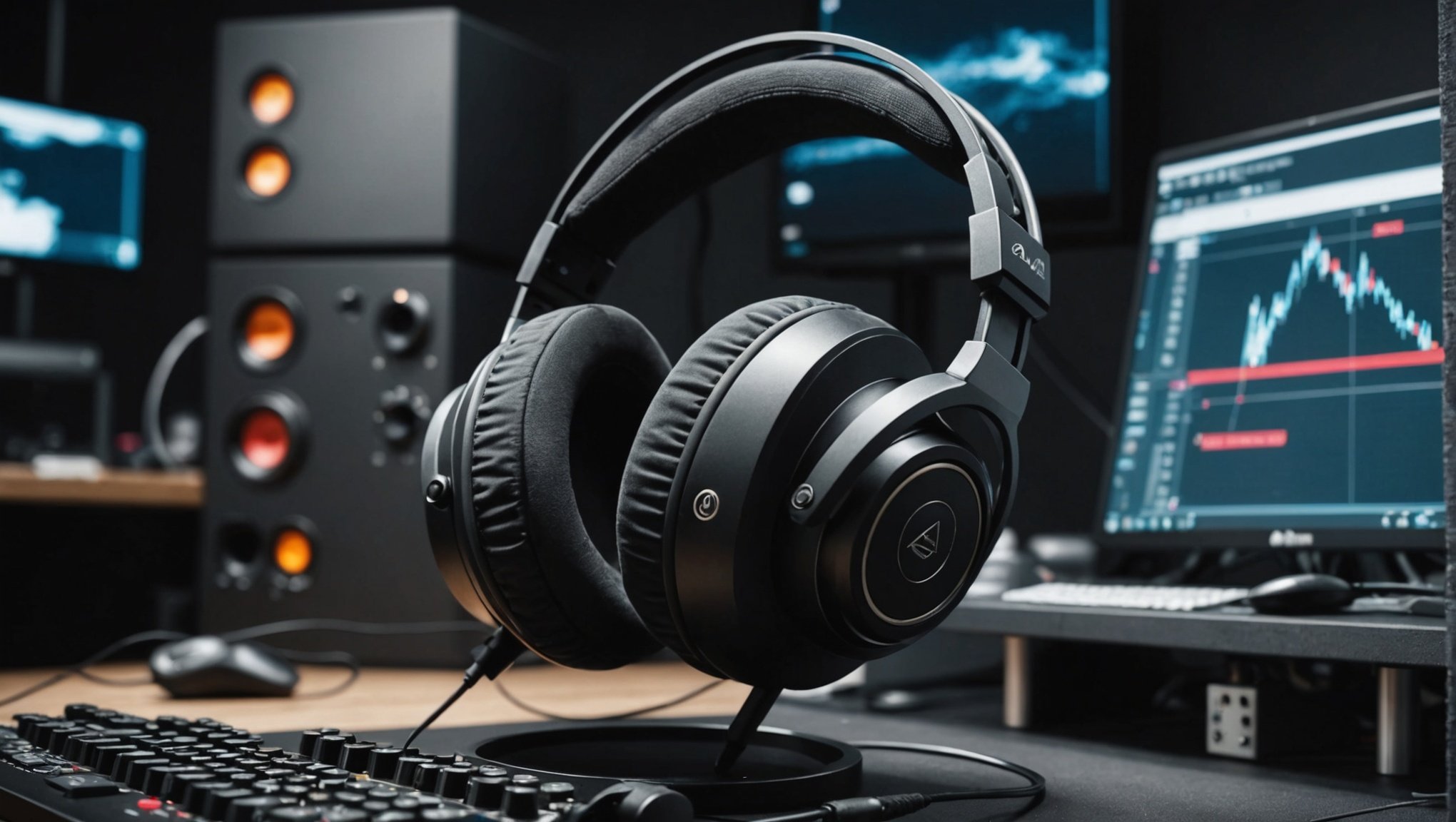Transform Your Gaming Experience: Mastering 3D Audio Techniques for Richer Soundscapes
Understanding 3D Audio: The Foundation of Immersive Sound
When it comes to enhancing your gaming experience, one of the most critical aspects to focus on is the audio. 3D audio, in particular, has revolutionized the way we perceive sound in video games, making the experience more immersive and engaging. But what exactly is 3D audio, and how does it work?
3D audio processing involves techniques that create a spatial sound experience, making it feel as if sounds are coming from various directions and distances in a three-dimensional space. This immersive technique enhances the listener’s perception, making audio experiences more realistic and engaging by simulating how we naturally hear sounds in our environment[2].
Also to read : Mastering Seamless Switches: Top Strategies for Fluid Transitions Between VR and Traditional Gaming
For instance, in a game like Call of Duty: Warzone, 3D audio can help you pinpoint the exact location of enemy footsteps or gunfire, giving you a significant tactical advantage. This is achieved through various techniques such as binaural recording, Ambisonics, and multi-channel speaker setups that simulate spatial sound[3].
Configuring Your PS5 for Optimal 3D Audio
To fully leverage the potential of 3D audio on your PlayStation 5 (PS5), you need to configure your audio settings properly. Here are some steps and tips to help you get the best out of your PS5’s audio capabilities:
Also to see : Crafting Realistic Plant Life: Techniques for Developers to Enhance Vegetation in Open-World Adventure Games
Headset Audio
If you use headphones, enabling 3D Audio in the Sound settings is crucial. You can choose from different presets such as “Standard” or “Bass Boosted” depending on your gaming setup. This customization allows you to tailor the sound to your preferences, making the gaming experience more immersive[1].
TV Audio
For those playing without a headset, turning on the 3D Audio for TV speakers can significantly enhance the auditory experience. You may also want to tweak the balance and bass settings to ensure that dialogue, effects, and ambient noise are clearly distinguishable. This fine-tuning can make a substantial difference in how engaged you feel in the game[1].
Techniques for Creating Immersive 3D Audio
Binaural Audio
Binaural recording is a technique that uses two microphones, placed in the ears of a dummy head, to capture sound in a way that mimics human hearing. When played back through headphones, this type of recording creates a highly realistic and immersive audio experience. It’s particularly effective in video games where the player needs to locate sounds in 3D space[3].
Ambisonics
Ambisonics is another method used to create 3D audio. It involves recording and playing back sound in a way that captures the full 360-degree sound field around the listener. This technique is often used in virtual reality (VR) and augmented reality (AR) applications to create a fully immersive auditory experience[3].
Multi-Channel Speaker Setups
For those with a home theater setup, using multi-channel speakers can create a spatial sound experience that envelops the listener. This setup can include speakers placed at various points around the room, such as front, rear, and overhead, to simulate the way sound behaves in real life[3].
Tools and Hardware for Enhancing 3D Audio
Gaming Audio Mixers
Gaming audio mixers are essential tools for streamers and serious gamers who want to elevate their audio setup. Here are a few top recommendations:
| Mixer | Key Features | Pros | Cons |
|---|---|---|---|
| FIFINE AmpliGame SC3 | XLR input with phantom power, individual channel controls, sound effects | Easy to use, high-quality sound, fun sound effects | No USB microphone support, limited to one XLR input |
| Yamaha ZG02 | Compact design, 3D sound modes, separate game and chat audio control | Stylish, easy to use, connects to PC and PS5 simultaneously | Limited features compared to other mixers |
| GoXLR Mini | Quick setup, physical controls, MIDAS preamp, audio routing options | Clean audio, easy to adjust volumes, top-notch preamp | Software can be complex to fine-tune |
Each of these mixers offers unique features that can enhance your gaming and streaming experience. For example, the FIFINE AmpliGame SC3 stands out with its professional XLR input and fun streaming features, while the GoXLR Mini is praised for its clean audio and physical controls[5].
Practical Tips for Mastering 3D Audio in Games
Enable Performance Mode
For competitive gamers, enabling Performance Mode on the PS5 can make a significant difference. This mode optimizes the console to deliver the highest possible frame rates, reducing input lag and ensuring fast-paced games run fluidly. Here’s how to enable it:
- Go to Settings > Saved Data and Game/App Settings.
- Select Game Presets and choose Performance Mode over Resolution Mode[1].
Use the Right Headset
Investing in a good gaming headset can greatly enhance your 3D audio experience. Look for headsets that support 3D audio and have good sound isolation to immerse you fully in the game.
Adjust Audio Settings
Fine-tuning your audio settings can make a big difference. For instance, adjusting the balance and bass settings on your TV or headset can ensure that all elements of the sound design are clearly distinguishable.
The Role of Sound Design in 3D Audio
Sound design is the backbone of creating an immersive audio experience in video games. Sound designers use various techniques to create an auditory environment that complements the visual elements of the game.
Creating Spatial Sound
Using tools like the Web Audio API, sound designers can create complex 3D spatializations. The PannerNode is a key component in this process, allowing designers to emulate the difference in sound as a listener moves around a sound source. This can include sounds flying over you, creeping up behind you, or moving across in front of you[4].
Adding Sound Effects
Sound effects are crucial in enhancing the immersive nature of 3D audio. From the rustling of leaves to the distant rumble of thunder, these effects help create a believable and engaging auditory experience.
Real-World Examples and Anecdotes
Immersive Audio in VR
In virtual reality games, 3D audio is not just an enhancement but a necessity. For example, in VR games like Half-Life: Alyx, the use of 3D audio creates an incredibly immersive experience. Players can pinpoint the location of enemies and objects with ease, making the game feel more realistic and engaging.
Competitive Gaming
In competitive games like Fortnite, 3D audio can be a game-changer. Players who can accurately locate sounds in 3D space have a significant advantage over those who cannot. This is why many professional gamers invest heavily in high-quality headsets and audio mixers.
Mastering 3D audio techniques is key to transforming your gaming experience into a richer, more immersive one. By understanding the basics of 3D audio, configuring your PS5 settings correctly, and using the right tools and hardware, you can elevate your gaming to a whole new level.
As a gamer, it’s worth taking the time to fine-tune your audio settings and invest in quality equipment. Whether you’re a casual player or a competitive gamer, the difference that 3D audio makes is undeniable.
In the words of a seasoned gamer, “The moment I switched to a 3D audio setup, it was like playing a different game. The immersion was incredible, and it completely changed how I experienced the game.”
So, take the leap and master the art of 3D audio. Your gaming experience will thank you.











